“If we really want to enjoy life to the fullest, we’ve got to do it in the present.”
Varuna Shunglu and Ken Spillman’s new book, More Than I Am: Yoga Wisdom for 21st Century Teens, published by HarperCollins Children’s Books, is a timely intervention to help people navigate physical and psychological well-being. It does not spell out preachy lessons, and instead flows effortlessly like a conversation between two friends, exploring the inscrutable mysteries of a machine called the human mind. It discusses the potential of striking the right balance in life, what lies at the core of one’s self, the virtues of different asanas and pranayama, the need to let go of thoughts about opportunities lost and the uncertainties of the future, the ways to channel positive energy into constructive action, and a lot more.
Divided into eight chapters which contextualise yoga within a larger discourse, and focus on different ways to edify our lives, the crux of this book is that practising yoga is akin to embarking on a voyage towards self-discovery; we can touch our innermost feelings in this process.
Addressed to 21st-century teens who need hand-holding to understand the wisdom of the ancient yogic sciences, the book is for all looking for ways to declutter their stressful lives. Knowledge has been crystallised into simple equations like “Smile + Stretch = Yoga every day” or “Meditation = Calm + Effortless awareness”. The writers seek to teach us the art of “tap(ping) into our undiscovered, unrealised and unlimited potential” to bring about changes in our routines.
In these pages, eye-catching illustrations by Suvidha Mistry, of asanas, chakras, food habits and other aspects of yogic life, feature between recipes for mood-fixing drinks, tossed quinoa, potato chips, pizza sandwich etc, all of which come with dollops of body positivity.
But to translate into reality what the book teaches, the authors have left the readers with a 21-day Sankalpa — a pledge to become more than who they are through a new set of activities, abhyasa (asana and pranayama) and meals each day. This holistic experience that the authors have tailored into a book is meant to awaken our minds to find the magic buried beneath the layers of our everyday lives.
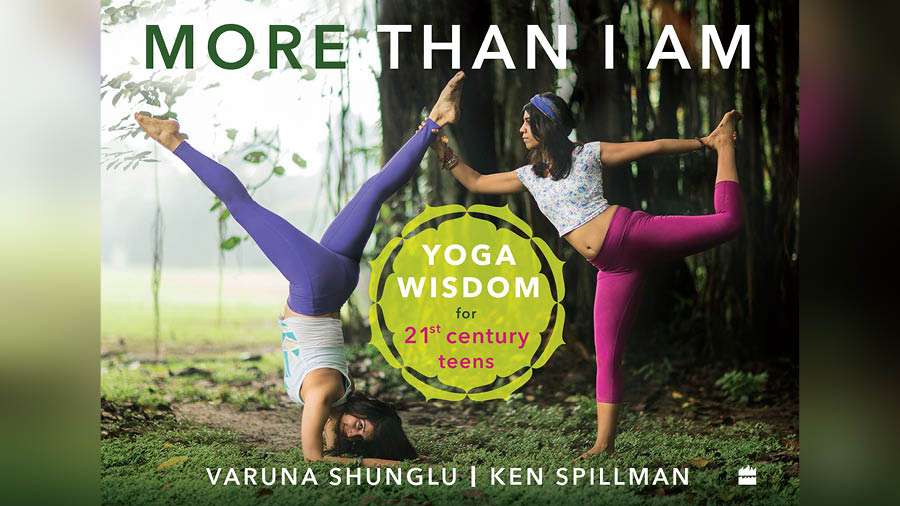
Varuna Shunglu teaches Yoga that, she believes, helps our minds achieve stability and tranquillity
My Kolkata caught up with Varuna Shunglu — author, lawyer, meditation teacher and passionate health counsellor — to learn more about her world, and the headspace which brought about this book.
My Kolkata: You’ve been practising yoga since you were a child. What led you to finally pen this book?
Varuna Shunglu: I started my practice at the age of three and each day, I discover something new about myself, my mind patterns and more. It's been more than three decades of learning, and one thing I can say for sure is that internalising and adapting it to your needs takes time, guidance, consistency, research and lots of patience. However, if you gradually incorporate it into your daily life, the kind of inner strength, health, and resilience it brings as a by-product is worth it.
For me, meeting and working with Ken Spillman was a catalyst. During the pandemic, he encouraged me to share my experience and as a practitioner himself, he brought in so much insight that this book became a little window into our independent work in schools and institutions.
Working with young people has inspired us to share our message with a larger community of empowered teens, young adults, and parents in this fast-changing and stressful world. More Than I Am is a starting point of decades of fieldwork and interactions, highlighting the true message of the practice, which is 'getting to know who you are' — an eternal question, but in a fun and activity-based way.
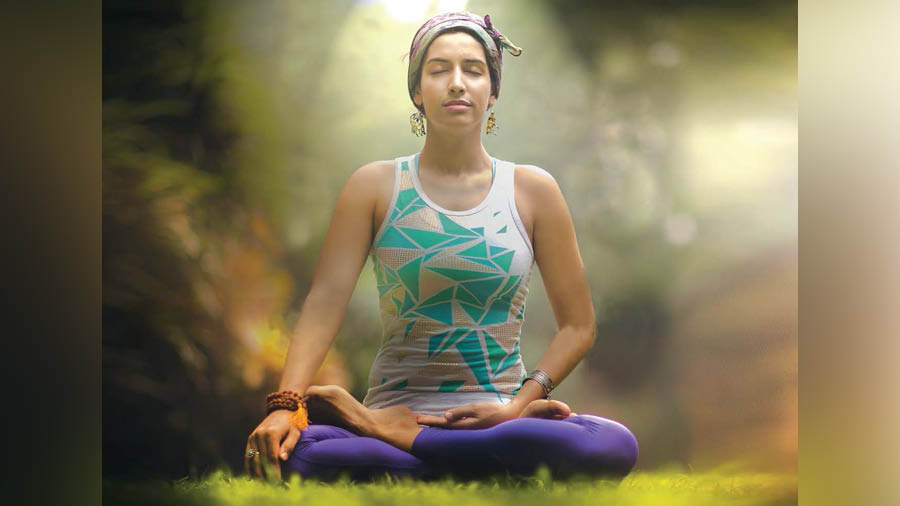
The authors of this book teach readers how to treat the body as a home
More and more people have been taking to yoga these days. Do you think it’s only a trend or is there a real interest in this ancient science?
The sudden awareness of yoga and Ayurveda lately could most possibly be a result of the pandemic. Natural remedies were sought, health routines were introduced, lung tea and whatnot were made of herbs and for many people, these worked! The practice of mindfulness and meditation was added to reduce anxiety and build immunity, and deep breath practices like Simha-kriya and deep belly breathing videos were trending on YouTube. Though yoga and Ayurveda are no substitute for mainstream interventions, they do give a common person power over their health.
Today, research is showing the connection between our autonomic nervous system and immunity. Real data establishes how eating right, living healthy and regularly meditating can improve longevity, support our epigenome in reducing diseases, and one can live well. Health isn’t something we can take for granted any longer. We just need to find the path that works for us. The sooner we pass this on to our kids, the more we offer them to live vibrantly. As this awareness builds, the interest in ancient sciences is only going to rise.
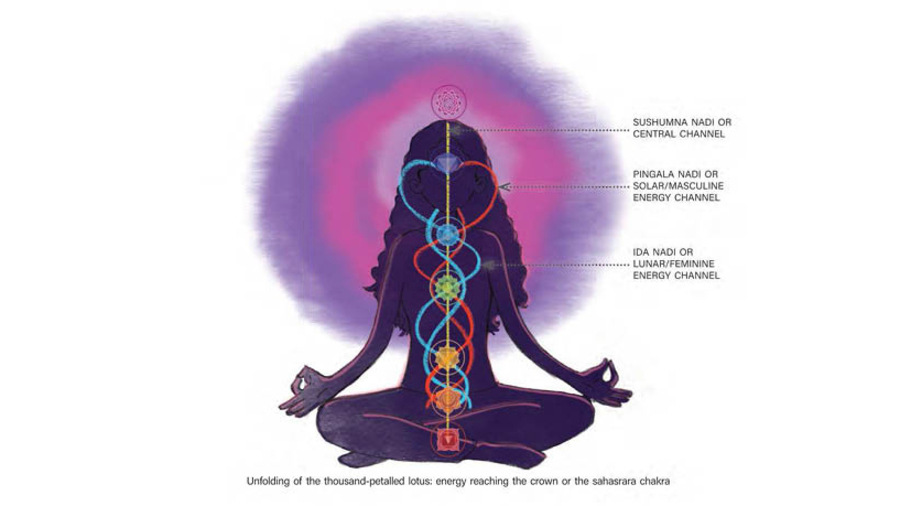
An illustration showing the nadis or energy channels in the human body
As someone who’s been seen to engage in both, what’s your take on the eternal gym vs yoga debate?
The two aren't mutually exclusive. It's like comparing the earth and a football, just because they have the same shape. Yoga encompasses physical movement and breathwork but isn't limited to it. Yoga isn't just asana (asana is one of the 8 pillars of yoga) or movement. It means 'unity', a body-mind-self way of living.
If you are wholly and completely in the moment with a focus on breath awareness, you can be a mindful bodybuilder, just like one can be a mindful runner, athlete, or gymnast. The question remains — as a bodybuilder are you listening to your body? Does your mind have clarity? Are you at peace with yourself? Are you working on building resilience, strength, compassion, mental awareness, and physical and mental flexibility even when things are not going your way? Then you are a yogi, no matter the sport.
Yogic tools have something to offer each person as they dig deep into discovering their true purpose.
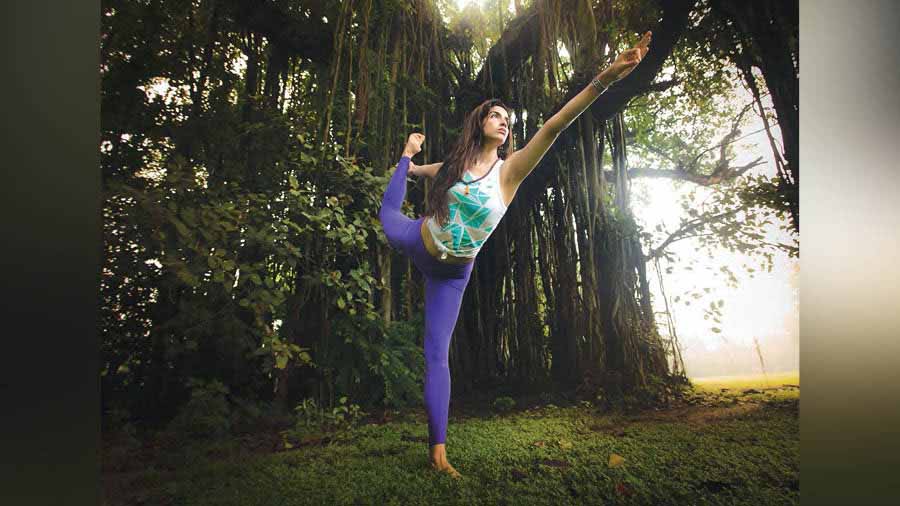
Yoga can help us initiate action towards the realisation of our aims
As a yoga and meditation teacher, what are some of the most recurring problems that you find your clients grappling with? How does yoga help with these?
I would like to start by talking about how yoga (yama, niyama, asana, pranayama, dharana and dhyana) can help an individual. ‘Yog’ is the unification of the mind, body, and breath. It centralises the life force within, which then can be channelled towards your goal.
The difference between being good and excellent is always a mental one – whether you are memorising for a test, applying a concept, or preparing to run a race on your sports day.
We have individuals of all age groups coming in, and challenges from PCOS and weight loss to anxiety or inner healing come up. The human body works as a whole system, and we are looking at individual elements only to put all the pieces of the puzzle together.
With ‘Eudaimom’, my team also works in prenatal and postpartum movement and breathwork which is so important to prepare for delivery. We have movement experts and psychologists on board who work with each individual as they come to us. This, in my opinion, has been a huge success. Through the pandemic, we could provide support to many mums going through the challenges of birthing and beyond. In the last year, we worked with many individuals, sharing tools and formulating programs where people have felt more relaxed, less stressed, had increased energy levels, shed postpartum weight and gone back to pre-birth sizes, and managed their insulin resistance, sleep apnea, etc. These experiences are very rewarding for us and help us create a community that supports one another.
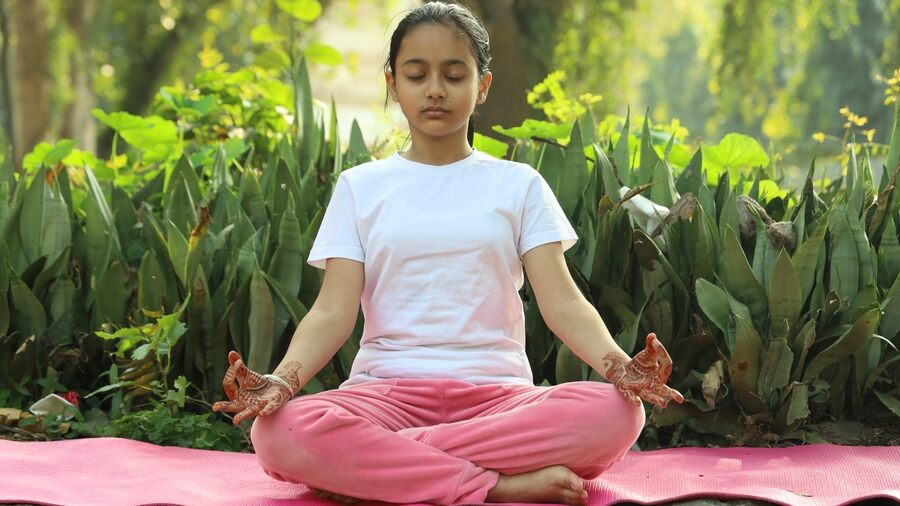
The authors opine that children should be initiated into yoga early in life
How do you hope your readers can benefit from the 21-day Sankalpa which you have included?
The 21-day Sankalpa is designed to bring balance, vitality, and clarity to your child’s life. It is going to transform your inner child if you decide to do it too. The Sankalpa is a promise to yourself, it makes you accountable while you move through the 21-day challenge of seemingly small steps every day. Even before you know it, you emerge as a completely different person in the end.
The 21-day Sankalpa seeks to build inner strength, and set teens on a path of awareness, growth, fearlessness and trust in themselves. We have been overwhelmed by the self-assuredness and confidence in our kids who have been practising it. We have had numerous parents writing to us to ask if this practice will help their child become calm and channel their excess energy effectively. Will it help children open their minds to harbour new ideas, and learn more about themselves? Yes, it will.
You are a health coach, entrepreneur, and lawyer - is it in this order? Do share with us some bits and pieces of your journey as you united these three distinct professions.
We all play different roles which naturally merge. I have been teaching since I was 18, right after school, and through my college days at Delhi University at LSR and the Law faculty. I never thought I would end up teaching meditation and enjoying it even more. The rest happened in its own time.
Today, I am working towards living a slower, more conscious life with my base in Goa, and working remotely as I travel. Through the pandemic, I have been lucky enough to travel among three countries and experience the food, culture, and ancient traditions of different spaces in South Asia, which truly make me believe that the world is opening and moving beyond boundaries. The internet has made living life and working accessible from everywhere. New possibilities are being created every day.
The last year was spent working with amazing new mums in Sri Lanka, meditation teacher-training, and backpacking across hidden beaches in the Andamans and Goa. We realise each time that people can be happy with very little or unhappy with a lot. The mind can change your whole experience and create your reality.

Tamasic food makes us lethargic and low in energy
Obesity among children and teenagers has become a serious issue lately. Out of the many important things your book talks about, one is mindful eating. How do you think we can address unhealthy eating patterns these days, given how food delivery apps are not making it easy for us?
Global obesity rates among the youth are alarming, and there could be many reasons behind this. It’s not as basic as calories in and calories out. It depends on the quality of food available, the general awareness, the way we eat, etc. Mindful eating is all about the choices we make and watch others make around us.
Children mirror the adults in their life. As parents and caregivers, we must change ourselves before we blame eating apps for obesity. Yes, they do make food more accessible but the larger questions are:
- Do your kids feel emotionally secure? Do you sit and eat together as a family, discuss the day spent, and show interest in each other?
- How much technology is being used on the table while eating? Are your minds aware of the food we are consuming?
- How often are you ordering from outside? Eating out occasionally is fine, though, the norm should be safe, healthy food cooked with ingredients and oils that you can control.
- Portions that are being consumed are important. Are you chewing your food well?
- Do the kids intentionally eat their food, and chew every bite with gratitude?
- Are you finishing dinner early by 7-7:30, at the latest? Children must be given enough time between eating and sleeping. Do they sleep well and feel restored after their night’s sleep?
- Does their plate have different coloured vegetables? Do they have enough protein, carbs, and good fats they need to grow?
- Do they feel good about their body, concerning the food they eat?
There are so many questions to probe, and there isn’t one straightforward answer. It is more challenging today, with so many distractions and technology making things accessible. This is why we must set good habits and patterns for the kids to emulate. Once healthy habits are in place, children like my six-year-old neighbour will tell you, “It’s not a good idea to eat burgers and chips every day. It’s not healthy.” Aware kids are empowered kids. They need to be initiated into this knowledge early in their lives.
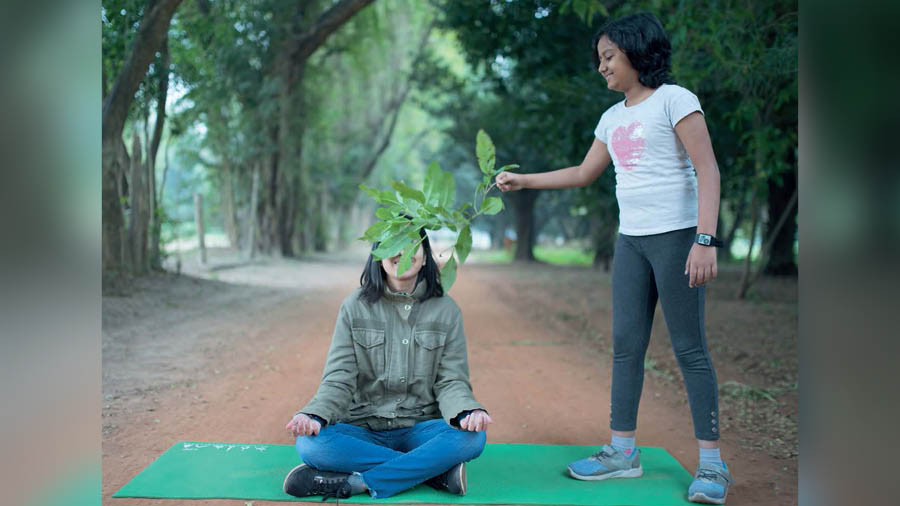
Through More Than I Am, Varuna Shunglu and Ken Spillman seek to reach out to children and young adults and make them feel heard
You’ve addressed the book to 21st-century teens, but of course, adults would do well to read the book too. Did you think it’s the youths who need rescuing the most? On that note, tell us a little about Ken Spillman - how you met him and how he helped shape this book.
If you remember your teenage years, you might recall the BIG emotions you felt. The feeling of wanting to change the world, and the next moment you'd feel unsure of yourself. When we are stepping into our young adult phase, with so many hormonal, emotional and physical changes happening, we require a greater sense of validation and support. That is the time we begin to push the boundaries to discover our personality, give our parents a hard time, and often want to discover the meaning of love and friendship. The teenage phase can bring immense confidence with a brilliant expansion, or make one shrink and turn inwards. It depends on how adults and caregivers around a teenager behave and respond to their thoughts and feelings. This is an age of in-betweenness – one is neither a toddler nor an adult.
The teenage years are the perfect period to begin one's multidimensional inner training. Before the onset of puberty, it's all fun and games as the body is still too delicate for intensive practice. One is not advised to do any complicated breathing practices before the age of 11 or 12 because the mind and body still develop at this stage, and there could be adverse effects. Today, puberty is arriving much earlier than it used to happen before. So, we need to account for that when introducing something new to our lives. Each child is different and needs to learn different tools depending on their temperament.
It is very important to know how to introduce kids to a yogic lifestyle at this age and show them how to graduate into a practice that sets a lifelong course in reinforcing positive health, intellect and emotions. Hence, teens don't need rescuing. Rather, they need a safe space where they can be heard, with kindness and firmness. They need adult support that can guide them without force or judgement - a friendship and a person who is in their corner.
I met Ken over 8 years ago, and he was that person for me - inspiring, compassionate and in my corner. This book isn't just words, it has been lived through, each word. As we wrote it, I wished for each child and teen to know that we hear them, we can understand how heavy the world feels sometimes, and we would be happy for them to reach out to us, and ask us anything they like. We are here to listen.
Varuna Shunglu has an M.Sc. in Yogic Science, and believes in bringing together the best of ancient wisdom and modern science. She works closely with schools and institutions to create wellness curriculums for athletes, children, and young adults to instil the practice of mindfulness and well-being into daily life.
Her co-author Ken Spillman is an internationally-known author and speaker who has written over 80 books.
You can get the book here.








